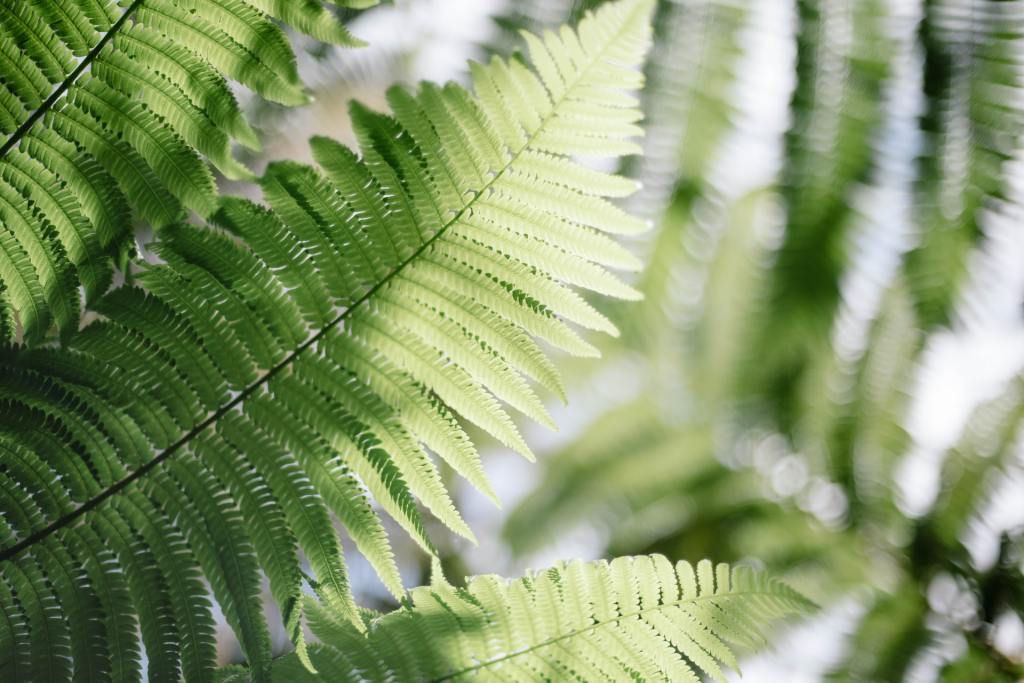Ferns are a popular plant to grow both indoors and outdoors. However, it can be a bit tricky to know where to plant them within your landscaping. When caring for them indoors, you have more control over what they’re exposed to, when they get water, and how much light they get. When outside, you’ll have to find a spot that provides them with what they need rather than giving it to them yourself. So here’s how to know where to plant your ferns where they can thrive and grow into big luscious plants as you see in the forests across the world.

What are ferns?
Ferns have elegant long leaves with delicate growth patterns that have been associated with mossy mountainsides and luscious forests for years. There’s even a valley in California called Fern Valley where they shot scenes for Jurassic Park! These plants are often associated with prehistoric times and might be a fun way to add some decor to your garden.
Ferns are found in the wild almost everywhere, but we don’t see them implemented into landscaping as much as they should be. They are relatively easy to care for; they are long-lasting and come in a wide variety of greens, sizes, shapes, and growth patterns. Ferns are a great plant to add behind flowering plants to give the blooms a lovely luscious green backdrop. They’re also disease-resistant and aren’t usually bothered by deer or rabbits. Ferns are ideal plants to use if the location you’re trying to fill is shady and moist, where most plants don’t want to be.
What soil do they need?
As you might have guessed, ferns like their soil to be more moist than dry. Find a location in your landscaping where the soil doesn’t dry out too quickly, and your fern will be happy there. If you want a fern in an area that seems a bit too dry, you can add some peat moss to the soil before planting to increase its ability to hold water. While you’re at it, add some compost or slow-release fertilizer to ensure the fern has plenty of nutrients to pull from.
What kind of light?
While some ferns can handle a bit of sunlight, as long as their roots have plenty of water, usually, you’ll want to avoid full sun when finding a location for your ferns. These are plants that grow in the under-canopy of rainforests and around the mossy creek beds of mountain valleys. They get partial shade to dappled sunlight at best; that’s where they’ll be most happy. Find a spot where a giant tree grows or where other taller plants will protect the fern from the harshest sun exposure. If you just have to have your fern in a sunnier spot, be sure to provide it with enough water and be prepared to prune off browned leaves in the middle of summer.

What are their water needs?
A fern’s water needs will depend greatly on where you’ve put them. If they have a nice shady spot where the soil doesn’t dry out too quickly, you won’t need to water your fern at all. However, if they’re in a sunny spot, you’ll likely need to water the plant more often, especially during the hot summer days. To combat this, you can add peat moss to the soil, cover the ground with a protective cloth, or plant taller plants around the fern. Just keep an eye on the plant as the summer days grow hotter, and if you notice browning leaves, bump up your watering schedule.
It’s always intimidating to take on a new plant you’ve never cared for before, but you’ve taken the best first step by educating yourself on the needs of a fern. Remember to find a shady spot for your ferns, or at least provide them with enough water if they’ll be exposed to more sunlight than they typically like. You also might want to consider adding peat moss to your soil to help with water retention. However, the best spot for a fern is under a big tree and surrounded by a few of its fern friends or other shade-loving plants.
Editors' Recommendations
- Incorporate the hortifuturism trend into your space for an out-of-this-world garden
- Zone 10a planting guide: Here’s what you need to know about what you can plant
- Where is the avocado growing zone? Here’s where avocados grow best
- Spider plants are hardy hydroponic plants – here’s how to grow your spider plant in water
- Here are some fun and easy DIY plant wall ideas


